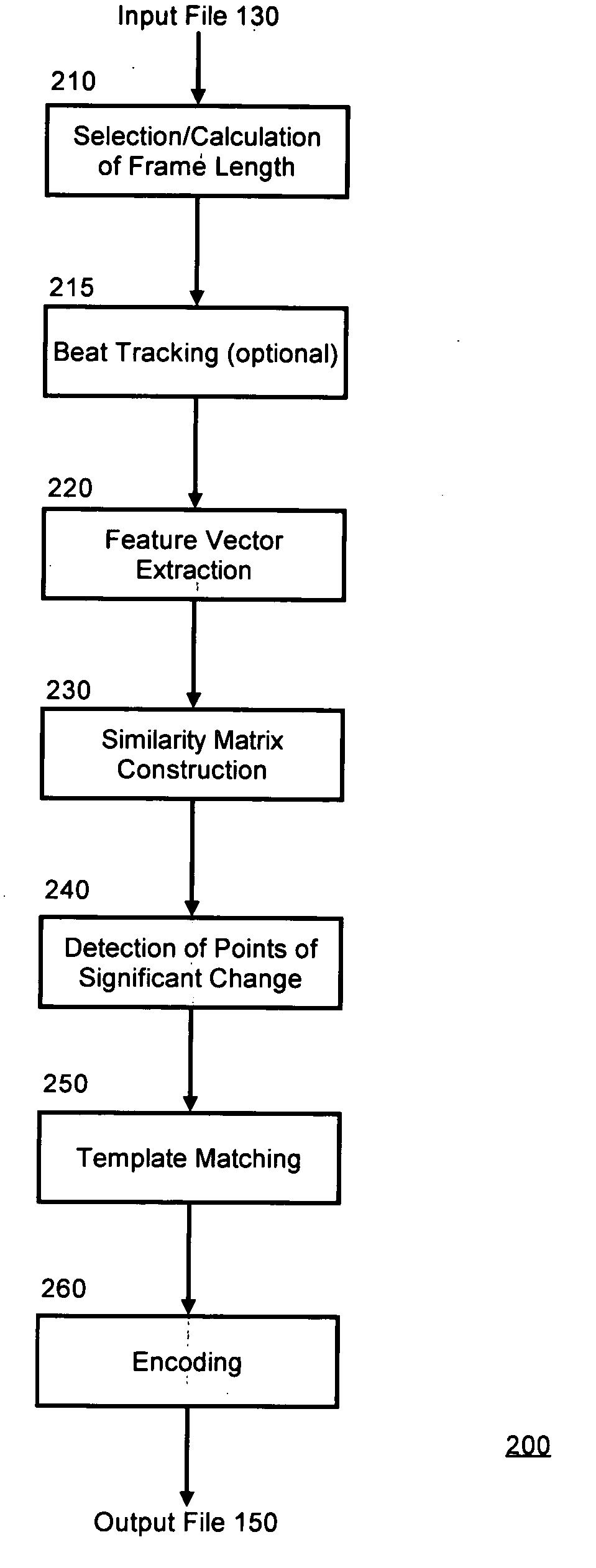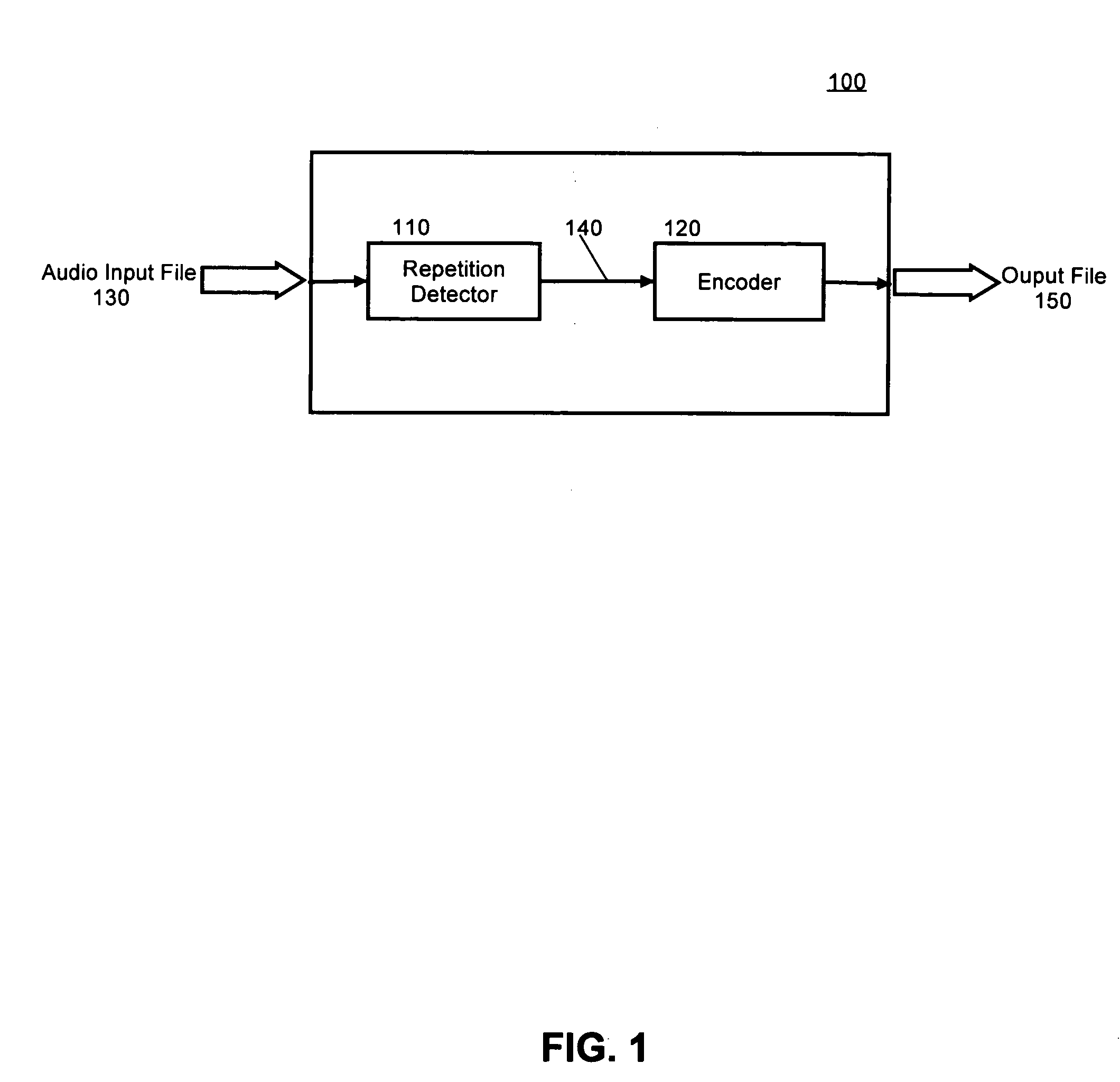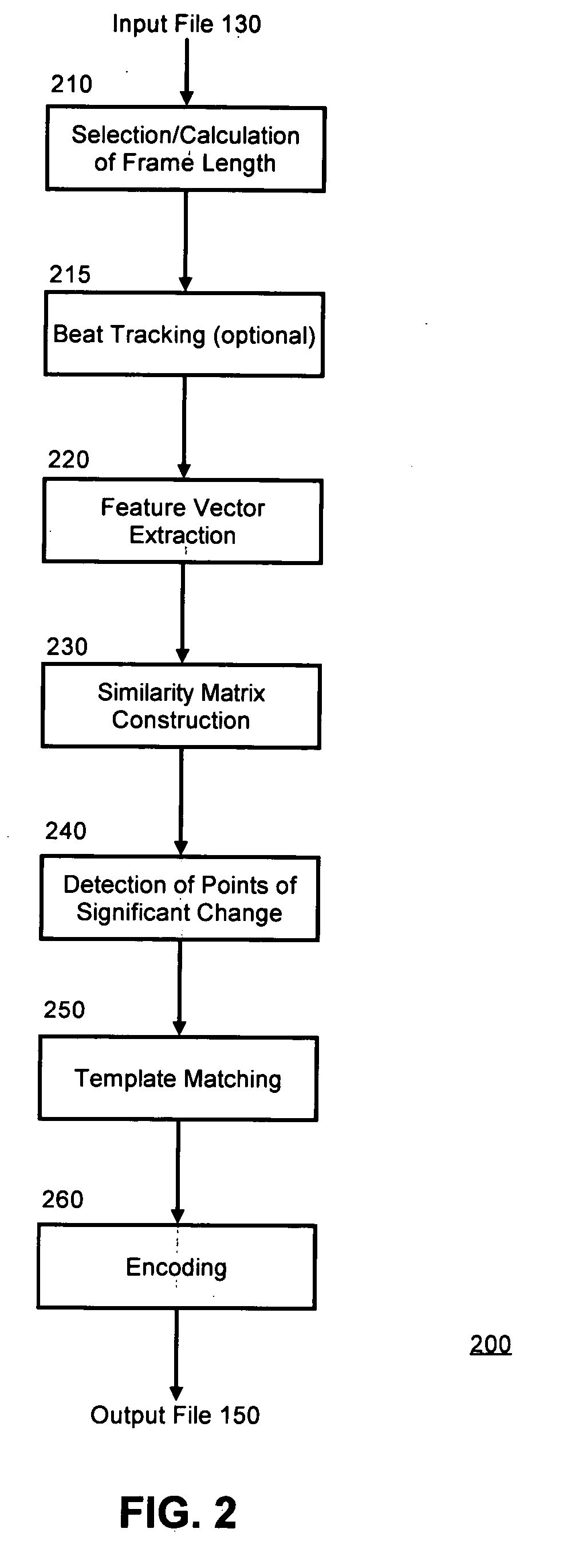Audio compression using repetitive structures
a technology of repetitive structure and audio, applied in the field of data compression and decompression, can solve the problems of large bandwidth, inexact representation, and inability to meet the needs of high-speed transmission, and achieve the effect of increasing the efficiency of the repetition detector
- Summary
- Abstract
- Description
- Claims
- Application Information
AI Technical Summary
Benefits of technology
Problems solved by technology
Method used
Image
Examples
Embodiment Construction
[0012] The present invention is a method, system and apparatus for audio compression. In accordance with the present invention, an input audio signal can be received and processed by a repetition detector. In general, the repetition detector can process the audio by dividing the input audio signal into equal length frames based upon a selected frame size. This is typically referred to as segmentation. Alternatively the frame length can be determined by using an automatic process that can calculate a frame length based on the particular audio file type. The automatic process can include, by way of example, a beat detector that calculates a beat-synchronous frame size for an audio file. Once the input audio signal has been divided into equal frames, extracting or computing a set of feature vectors for each frame parameterizes it. The feature vectors are then used to build a “similarity matrix.” The purpose of the similarity matrix is to display the similarity between a frame of the au...
PUM
 Login to View More
Login to View More Abstract
Description
Claims
Application Information
 Login to View More
Login to View More - R&D
- Intellectual Property
- Life Sciences
- Materials
- Tech Scout
- Unparalleled Data Quality
- Higher Quality Content
- 60% Fewer Hallucinations
Browse by: Latest US Patents, China's latest patents, Technical Efficacy Thesaurus, Application Domain, Technology Topic, Popular Technical Reports.
© 2025 PatSnap. All rights reserved.Legal|Privacy policy|Modern Slavery Act Transparency Statement|Sitemap|About US| Contact US: help@patsnap.com



